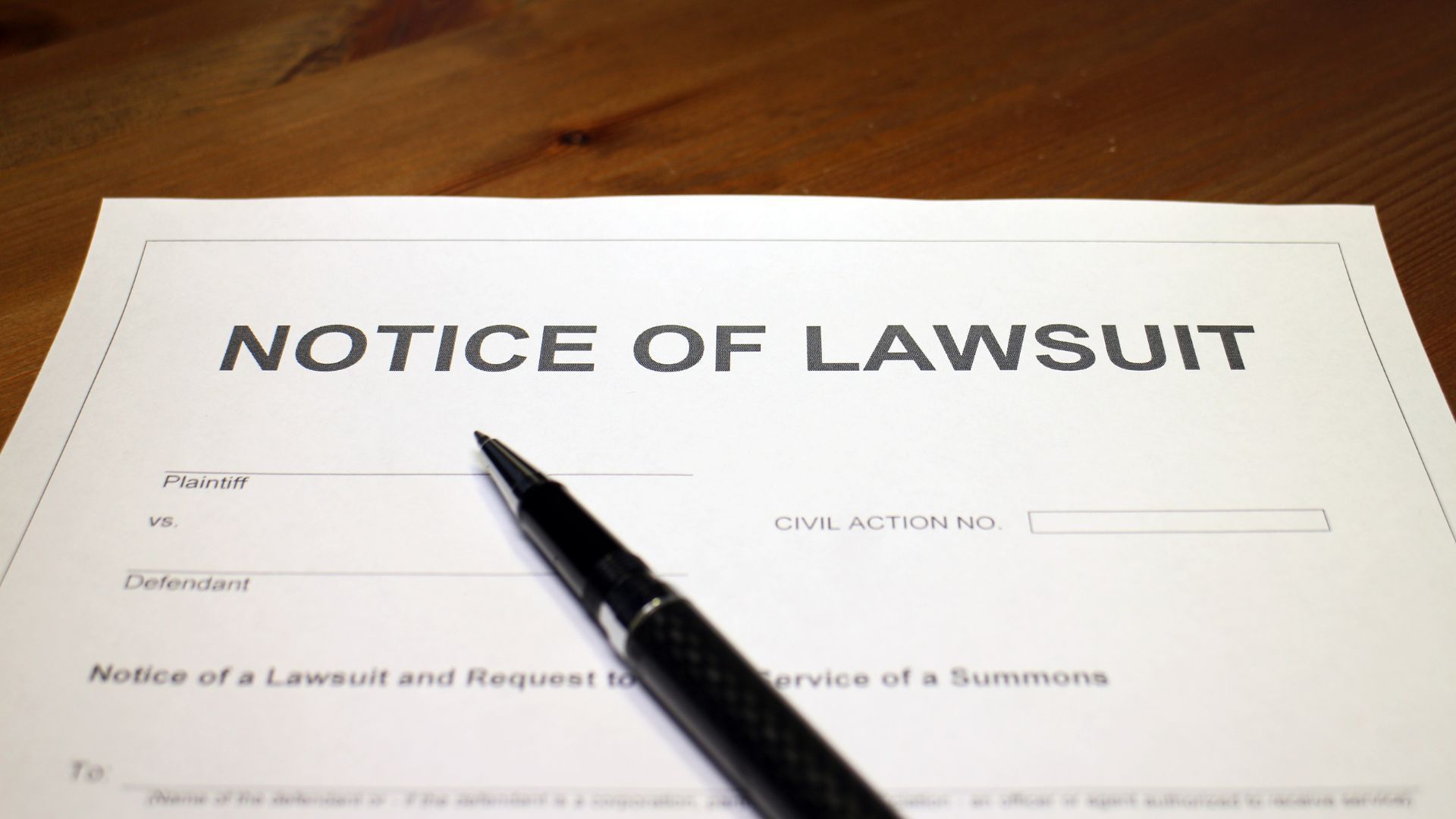Understanding the Distinctions: Mass Tort vs Class Action Lawsuits
Need A Florida Lawyer? Fill Out The Form Below
Understanding the Distinctions: Mass Tort vs Class Action Lawsuits
Mass tort and class action lawsuits both serve as legal tools when multiple individuals suffer harm from the same issue. However, they bear distinct characteristics and methods of operation.
Mass tort cases involve a group of plaintiffs, each with individual claims against a defendant or defendants who have committed wrongful acts leading to widespread injuries or damages.
Each plaintiff in a mass tort claim presents their case separately, even though they fall under one overarching lawsuit.
On the other hand, class action lawsuits consolidate several individual injury claims into one single claim wherein all injured parties are represented collectively by a lead plaintiff, also known as class representative.
The key difference between these two types of litigation lies in how closely they resemble traditional injury claims - mass torts retain more control for the plaintiff whereas class action gives greater control to the collective force advancing similar allegations of harm against the culprit party.
Understanding these distinctions is vital when you're part of a large group involved in any legal situation tied up with complex issues and widespread harm.
Differences between Mass Tort and Class Action Cases in Florida
Mass tort cases in Florida involve a group of distinct injuries occurring simultaneously, while class action lawsuits treat individuals as members of a large group represented by a small legal team. Joe Lyon Explains the process of Mass Tort Litigation in the video below
How Mass Tort Cases Work in Florida
In Florida, mass tort cases begin by gathering a substantial group of plaintiffs who have all suffered injuries or damages simultaneously. This collective is typically linked to a specific product, event, or even medical malpractice that can trace back to a common cause.
Each plaintiff in the mass tort case files individual claims against the same defendant and unlike class action lawsuits where injuries are similar among plaintiffs; each claim bears its own unique circumstances in mass torts.
For this reason, each claim undergoes separate evaluation while taking into account factors like maturity of litigation and exposure magnitude to harmful products for damage assessment.
With greater control over their suits than class action lawsuit participants possess, plaintiffs navigate the complexities of their independent personal injury cases during settlement negotiations alongside legal professionals specializing in multiple plaintiff lawsuits.
The endgame: securing varied compensation amounts depending on injury severity per plaintiff upon winning these often-complex litigations.
Examples of Mass Tort Cases
Notable mass tort cases have made headlines in Florida and across the country, revealing the powerhouse that this form of legal action can become. Here are some prominent examples:
- The BP Oil Spill: This catastrophic event led to an outpouring of multiple plaintiffs filing injury claims against a common defendant, BP. This case classifies as an environmental mass tort.
- Asbestos Litigation: For decades, several companies exposed workers and consumers to asbestos without proper safety measures or warnings, leading to numerous cases of mesothelioma and other health issues.
- Zantac Lawsuits: Many people filed lawsuits after discovering that long-term use of the popular heartburn medication could potentially lead to cancer.
- The Opioid Crisis: Pharmaceutical companies have faced thousands of lawsuits claiming they contributed heavily to the opioid epidemic by not adequately warning about addiction risks.
- Johnson & Johnson’s Baby Powder Cases: Thousands of women filed mass litigation against this company alleging that their talcum-based baby powder caused ovarian cancer.
- 3M Earplug Lawsuits: Veterans across the United States sued 3M for hearing loss due to defective combat earplugs.
Mass Tort Case Requirements in Florida
Navigating the labyrinth of mass tort litigation in Florida can be complex due to its intricate requirements. The cornerstone of these cases is typically product liability claims, where plaintiffs must demonstrate causation between a defective product and their injuries or damages.
This might involve dangerous drugs, defective medical devices, or toxic exposure incidents - each necessitating a specific type of proof. Moreover, it's vital for affected individuals to establish the culpability of multiple defendants potentially involved in the case.
Distinct from many other states' procedures, Florida imposes unique guidelines on mass torts regarding the number of claims presented and the dispersion of injuries among victims involved.
Ensuring these requisites are met could set a path towards substantial individual settlements and compensation for plaintiffs pursuing justice through this legal route.

How Class Action Cases Work in Florida
In Florida, class action cases involve multiple plaintiffs who have suffered the same injury or harm due to the actions of a defendant. These plaintiffs join together to bring a collective lawsuit against the defendant.
Unlike mass tort cases, where each plaintiff's claim is treated separately, class action cases treat all plaintiffs as a single group.
In class action cases, one representative plaintiff is chosen to present the case on behalf of all the plaintiffs. This representative acts as a spokesperson and presents evidence and arguments in court.
If successful, any verdict or settlement obtained will be divided among all the plaintiffs involved in the lawsuit.
Examples of Class Action Cases
Below are a list of examples of popular Florida Class Action Lawsuits to help you get a better understanding.
- A class action case in Florida involved a pharmaceutical company that allegedly manufactured and distributed a medication with undisclosed side effects. The plaintiffs claimed they suffered severe medical complications as a result of using the medication. The class action allowed all affected individuals to join together in pursuing legal action against the company.
- In another class action case, a large automotive manufacturer faced allegations of misleading advertising regarding the fuel efficiency of their vehicles. The plaintiffs argued that they purchased these vehicles based on false claims, resulting in financial losses and damages. The class action allowed all affected consumers to seek compensation for their losses.
- A class action case was also filed against a major technology company for privacy breaches and unauthorized data sharing. The plaintiffs alleged that their personal information was illegally accessed and shared without their consent, leading to potential identity theft and other harms. The class action sought remedies for all impacted individuals.
- One notable class action case involved a well - known financial institution accused of charging excessive fees on investment accounts. The plaintiffs claimed that these fees significantly diminished their returns and violated industry regulations. The class action aimed to hold the institution accountable and obtain compensation for all affected investors.
- In another example, a large retail chain faced a class action lawsuit from employees alleging widespread discrimination on the basis of race or gender in hiring, promotion, and pay practices. The plaintiffs sought justice for themselves and others who had experienced similar mistreatment within the company.
Factors to Consider When Choosing Between Mass Tort and Class Action Lawsuits
When faced with the decision of whether to pursue a mass tort or class action lawsuit, there are several key factors to consider. One important factor is the level of individuality in your case.
Mass tort lawsuits treat each plaintiff as an individual, requiring them to establish their own facts and prove damages done by the defendant. On the other hand, class action lawsuits represent the shared experiences of many people who have suffered similar harm.
Another factor to weigh is the potential settlement size. In mass tort cases, individual settlements tend to be larger compared to class action lawsuits since each plaintiff's damages are evaluated separately.
However, if your case involves similar damages suffered by many individuals, a class action lawsuit may offer more efficiency.
It's crucial to assess whether your damages are unique or vary greatly among plaintiffs. If so, a mass tort lawsuit might be more beneficial as it allows for tailored compensation based on individual circumstances.
Conversely, if your grievances align closely with those of others and involve comparable damages, pursuing a class action lawsuit could be advantageous.
Ultimately, making an informed decision requires careful consideration of these factors and seeking guidance from legal experts experienced in both types of lawsuits. Understanding these distinctions can significantly impact the outcome and potential compensation you receive for your claim.
Filing a Mass Tort or Class Action Lawsuit in Florida
If you live in Florida and need to file a Mass Tort or Class Action Lawsuit, contact Katz & Associates Florida Law Firm. Our expert lawyers will ensure your case is handled with care and that you get maximum compensation. To file a mass tort or class action lawsuit in Florida, there are certain steps that need to be followed. Here's what you need to know:
- Find Legal Representation: Before filing any type of lawsuit, it's crucial to consult with an experienced attorney who specializes in mass tort or class action cases. They will guide you through the process and ensure that your rights are protected.
- Gather Evidence: To strengthen your case, gather all relevant evidence related to the harm you have suffered. This may include medical records, product documentation, witness statements, and any other supporting documents.
- Identify Potential Plaintiffs: In a mass tort case, each injured person files their own individual lawsuit. Therefore, it's important to identify others who have been similarly affected and may want to join the litigation.
- File the Lawsuit: Once you have legal representation and sufficient evidence, your attorney will file the lawsuit on behalf of all plaintiffs involved. The complaint will outline the injuries sustained and seek compensation for damages.
- Class Certification (for Class Action): In a class action lawsuit, an additional step is required - class certification. This involves demonstrating that the case meets specific criteria for certification as a class action.
- Discovery Process: After filing the lawsuit, both parties engage in discovery - a stage where they exchange information and gather evidence from each other. This includes depositions, document requests, and interrogatories.
- Negotiate Settlement or Go to Trial: Depending on the circumstances of your case, settlement negotiations may take place between both parties. If a fair resolution cannot be reached, the case may proceed to trial where a jury will determine liability and potential compensation.
Other things you need to know about filing a mass tort or class action lawsuit include:
- Florida residents may file mass tort or class action lawsuits if they have been harmed by a particular product, service, or event.
- Mass tort cases are aggregations of a large group of plaintiffs making similar claims.
- Mass torts are closer to traditional injury claims, where every plaintiff is treated as an individual in the suit.
- In mass tort actions, each injured person files their own lawsuit and is named a plaintiff in their own case.
Frequently Asked Questions About Mass Tort & Class Action Lawsuits













